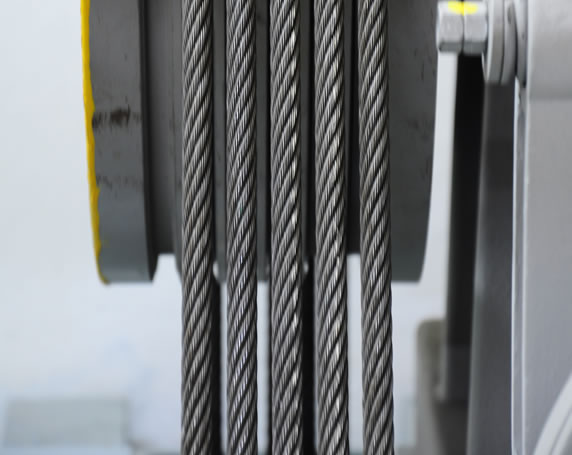 The latest edition of the A17.1/CSA B44 Safety Code for Elevators and Escalators includes specific requirements to ensure that elevators and escalators are properly maintained. Following is an explanation of the code required Maintenance Control Program (MCP) and how it is meant to ensure the proper performance of your building’s Vertical Transportation (VT) equipment as well as the safety of the VT riding public.
The latest edition of the A17.1/CSA B44 Safety Code for Elevators and Escalators includes specific requirements to ensure that elevators and escalators are properly maintained. Following is an explanation of the code required Maintenance Control Program (MCP) and how it is meant to ensure the proper performance of your building’s Vertical Transportation (VT) equipment as well as the safety of the VT riding public.
As prescribed in the A17.1/CSA B44code, all elevators and escalators are to be provided with a written Maintenance Control Program that is to be maintained and updated throughout the life of your building’s VT system. Included in the MCP must be maintenance procedures for each VT unit as well as the frequencies that maintenance procedures must be performed. Complete manufacturers maintenance schedules for each unit must be included in the MCP even if the specific units are of the same type. As an example: For a group of 6-3500 pound capacity elevators running at 500 fpm that are serving the same floors with group automatic operation, a documented MCP must be provided and be available on site for each elevator in the group. The MCP can be in either written (hard copy) or electronic (local computer or internet based) form, but it must be available to be reviewed on site.
The MCP record for each unit must include the specific identification of the VT equipment for which it applies, the name of the equipment service provider, the date that the service on the equipment was performed, a description of the tasks performed and the elevator code requirement associated with the service tasks that were performed. The MCP documentation must also include the wiring diagrams and specific maintenance procedures for certain electrical protective devices. Maintenance tasks, equipment examinations and tests, including the intervals that such tasks, examinations and tests must be performed must also be included in the MCP.
[pullquote]Failure of a building owner or their VT maintenance organization to provide a properly documented MCP may result in significant fines being levied against the building by the jurisdictional authority.[/pullquote]It must also be noted that the provisions of the A17.1/B44 Code require that building owners are responsible for having an MCP on site for each elevator and escalator in the facility. While it is the responsibility of the contracted VT maintenance company to implement the MCP, the plan can be developed by either the maintenance provider, or a third party consultant.
During annual and 5 year VT system inspections and tests performed and/or witnessed by jurisdictional authorities (ie: municipal and/or state elevator inspectors) the MCP must be available for the authorities to review and for them to confirm that the plan is in fact in place and being properly implemented. Failure of a building owner or their VT maintenance organization to provide a properly documented MCP may result in significant fines being levied against the building by the jurisdictional authority. And, depending on the condition of the equipment, poorly maintained or operating equipment might be shut down by the inspector.
The latest 2013 edition of the A17.1/CSA B44 Code includes all of the requirements and provisions that must be included in a VT MCP. A task group comprised of elevator industry experts, elevator industry manufacturers, installation and maintenance contractors, jurisdictional authorities, building owners and building owner’s consultants worked on the development of the code required MCP for over two years. The end result of this effort has resulted in VT MCP code requirements that if properly adhered to by VT maintenance providers will ensure the proper performance and longevity of your buildings VT equipment as well as the safety of your building’s occupants and visitors.
It is essential that you discuss this subject with your VT maintenance provider to be sure that the VT equipment in your facility is in compliance with the issues stated in this article and more specifically with the specific code required MCP provisions. Your VT system’s MCP must be properly implemented and available on-site for you as the owner of the equipment to review. It must also be regularly updated and made available to the elevator/escalator inspectors in your area to review as needed during their code mandated routine and periodic inspections of the elevators and escalators in your facility.
Properly maintained VT equipment will not only be safer for people to use but it will also result a longer life span of the equipment. Your maintenance company’s compliance with the elevator and escalator MCP requirements that have been included in the latest edition of the A17.1/CSA B44 code will better ensure the safety of the people using the VT equipment in your facility. And from a financial perspective, by extending the life of your VT system, it will also it will also serve to protect the significant financial investment that you as building owners have made in this essential part of your building. This sounds like a “Win/Win� situation to me and I am sure it will be for you as well.
Robert S. Caporale, MSc
Robert S. Caporale is the Vertical Transportation Editor for High Rise Facilities. He has over 50 years of experience in the Building Vertical Transportation industry working as a VT System Designer, Certified Elevator Inspector (QEI) and as the Editor of Elevator World Magazine.

